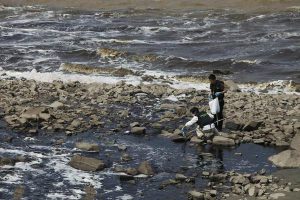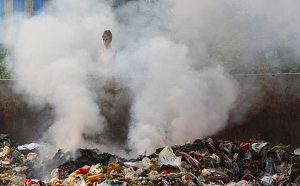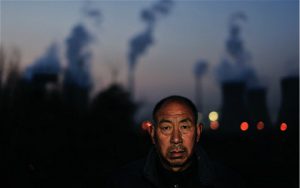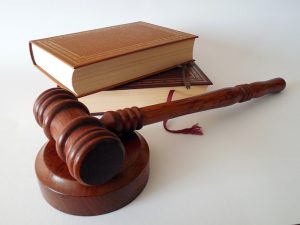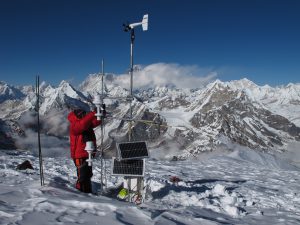Over the past decade, governments outside Beijing have found a powerful environmental tool in limiting the number of approved environmental impact assessments (EIAs).
Although backed by the new Environmental Protection Law and proven to be an efficient response to pollution incidents, experts say the increasingly popular tool is overly blunt and meant for use as a last resort and in specific circumstances.
For the central government and weaker environmental protection bodies across China, restrictions on EIA approvals are effective against local protectionism and persuade local governments to take the environment more seriously.
In particular, those in the environmental sector heartily embrace EIA restrictions as a solution that forces noncompliant local governments to clean up sources of pollution; by halting all EIAs within a certain area, no new projects can go ahead, which hinders the investment on which local governments depend.
In Anyang, Henan province, for instance, as of June 15, 2015, a 223-day-long freeze on EIA approvals imposed by the Ministry of Environmental Protection (MPE) as part of efforts to combat atmospheric pollution, has led to the suspension of 118 projects involving nearly 10 billion yuan (US$1.6 billion) in investment.
As one local environmental official told Southern Weekly, “the restriction and the daily fines are equally important. Local governments get nervous when they can’t get investment.”
The new Environmental Protection Law, which came into effect in January, allows for both daily fines for companies and the regional EIA restrictions imposed on governments. EIA restrictions have also been used in national action plans against air and water pollution to deal with fail to meet targets, and are being used in efforts to tackle air pollution at a local level in Shanghai, Shaanxi, Hubei and Hainan.
A recent study led by academics in Beijing notes that while the EIA restrictions approach is to some extent effective, as a system it lacks a sound legal basis and falls short on public consultation. Zhu Xiao, an associate professor at Renmin University of China’s Law School and lead author of the paper, identified a number of areas for improvement to the system.
With those in mind, Southern Weekly reporters scoured the websites of the MEP and its provincial and city bureaus to document regional restrictions on EIA approvals since the tool was first used a decade ago, to see how use of this “killer blow” has evolved.
Since then, Zhu’s case studies show that as of July 2015, a total of 120 EIA restrictions have been imposed. Of those, 48 were issued by the MEP or its predecessor, the State Environmental Protection Agency (SEPA), 67 by provincial environmental authorities, and five at the city level.
Henan and Anhui lead with the number of MEP-imposed restrictions, respectively receiving five and four, while at the provincial level Shandong has been the most stringent enforcer, sending down 18 restriction orders – extended to the entire city of Binzhou, in a case earlier this year.
Restrictions have been issued for varied reasons. This was particularly the case prior to 2014, when limits were issued in response to breaches of EIA rules, failure to meet emissions caps, incidents of lead poisoning and heavy metal pollution. Since 2014, restrictions have been more targeted at failure to meet total emissions caps and environmental quality targets, but have included more comprehensive bans such as those aimed at “all projects which will release waste water” in Shandong, Anhui and Jiangxi.
First resort
According to Zhu, use of regional restrictions on EIA approvals was initially conceived as a last resort in dealing with local governments or other bodies that fail to submit to environmental law enforcement. Early concerns were that the system, based on administrative powers rather than legislation, would be prone to abuse. Since 2007, however, there have been calls for this powerful system to be given sound legal footing.
Prior to the new Environmental Protection Law, rules on EIA restrictions were found only in the Water Pollution Prevention and Control Law, and the Regulations on Environmental Impact Assessment of Planning. In both those documents, EIA restrictions were authorised only when emission caps were not met. With the new Environmental Protection Law came a provision for restrictions when environmental quality targets are missed, a practice that in fact had been in use for some time.
In Shandong, for instance, approvals for projects which would cause air pollution were frozen in 2013 in a part of Binzhou that breached air quality standards, and again in 2014 when air quality there worsened.
The new law also stipulates that powers to impose these restrictions lie with “environmental protection departments of the People’s government at province-level and above.” But Southern Weekly reporters found local-level governments imposing restrictions after that law came into effect.
The Tianjin Binhai EPB, in one example, restricted approvals for the Dagang Economic Development Zone in January of this year. In another, documents on air pollution and river management issued this year in Hefei, Anhui province, also give city and county EPBs the right to issue restrictions.
Environmental law experts interviewed for this piece say the urgent need to improve the environment justifies action by local EPBs, when authorised by local people’s congresses, to impose EIA restrictions. Questions sent to the Hefei EPB regarding the legal basis for this, however, were unanswered at time of publication.
Zhu, however, argues that now the new environmental law is in effect, other regulations should be amended to fall into line; local governments should not be issuing EIA restrictions, she says, and decisions by local people’s congresses should not conflict with those of the National People’s Congress.
Cao Mingde, China University of Political Science and Law professor and co-author of the amended environmental protection law, disagrees: “Different doesn’t mean in conflict – it just means local governments are taking an even tougher line, and it’s in accordance with Article 44 of the Environmental Protection Law. There’s no reason they can’t try it,” he said.
“In many cases, EIA procedures aren’t carried out at the provincial level – if local cities can’t impose restrictions, we may lose an important environmental protection tool.”
Zhu also complains of a logical flaw in the new law. It rules the restrictions apply to “construction projects which create new emissions of key pollutants” – meaning only those which will emit sulphur dioxide, nitrogen oxides, chemical-oxygen demand and ammonia.
Out of tune
With regard to situations such as Binzhou, where in June 2015 the MEP ordered a halt to EIA approvals for “all construction projects,” or when provincial authorities in Shandong restricted EIAs for “projects creating waste water or solid waste” in Weifang, experts say that the nature of EIA restrictions speak more to the spirit than the text of the new environmental protection law.
“Areas the environmental protection law doesn’t cover can be covered by other regulations,” says Wang Canfa of the China University of Political Science and Law.
An expert from the MEP agreed, saying that in addition to laws mentioned above, State Council documents such as the action plan on air pollution also allow for EIA restrictions. These also can justify local government actions.
Where all experts seem to agree, however, is that use of EIA restrictions at present is currently neither standardised nor unified, and even tends towards the casual. At the root of this, they say, is a lack of clear norms from the state on the applicability, scope and procedures for EIA restrictions.
The Law on the Prevention and Control of Atmospheric Pollution, currently under revision, they anticipate, will take the same approach as the Environmental Protection Law. Similarly, drafters of an Environmental Impact Assessment Law are aware of the issue, but while that law is on the legislative agenda it will be some time before it is completed.
In 2008, the MEP did issue a consultation draft of a method for managing EIA restrictions. While some local governments have used the draft in their own regulations, political disagreement and a lack of a legislative basis means the document went no further than the MEP’s website, where the draft rests today.
“That could be sent out again,” says Zhu. “It’d be a bit easier than waiting for the Environmental Impact Assessment Law.”
This article was originally published by Southern Weekly and can be found here.
